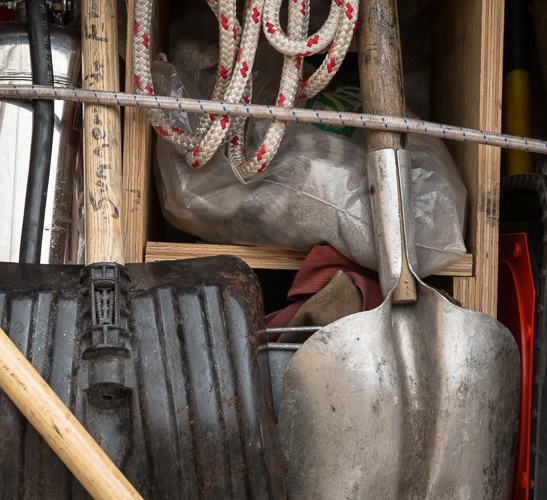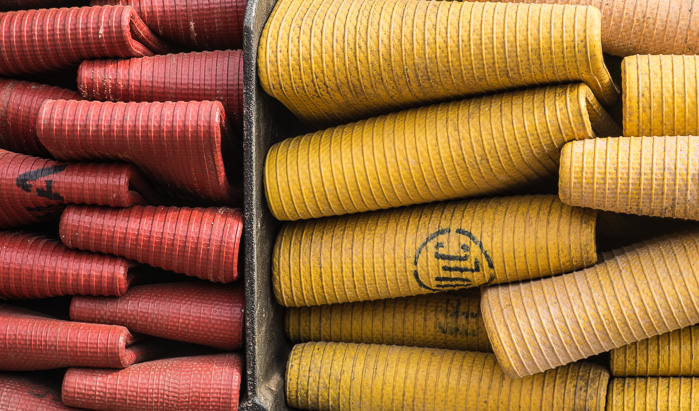The EVF
The biggest difference between the M240 and its Leica predecessors is live view and the electronic viewfinder, so I’ll start there. First off, let me say that I consider them inseparable in most circumstances – you can’t use an EVF without live view, and there aren’t many times when you’d prefer to look at the display on the back of the camera to compose and focus than look through the finder.
It’s old news that the Leica EVF is a marked-up, relabeled version of the Olympus VF2 finder. It’s not a great finder – its resolution, dynamic range, and brightness could be improved – but it’s adequate. My previous EVF experience has been with the Sony NEX line of cameras, and with the RX1. All those cameras turn on the EVF when you put your eye to the finder. The VF2 does not. My first reaction was that this was an inconvenience, but I’ve changed my mind. With the RX1 and the NEX-x cameras, it you’re using the camera’s menus in the field, and using the screen on the back of the camera to view them, and you lean in close to get a good look, the camera thinks you’re using the EVF, and switches off the display on the back of the camera. This is especially true if you’re wearing a hat with a broad brim, or precisely the kind of hat that works best to shade the on-camera display. With the M240, there’s none of that. If you want to use the EVF, you press the button on the back of the finder. When you’re done, press it again. Both live view and the EVF choices are sticky, in that they survive after you’ve turned the camera off and back on, which is nice.
There is hope that Leica may release a firmware image that supports the nicer Olympus VF4 finder, but I’m not holding my breath.
I almost never used the EVF with the 18mm lens. You don’t’ need it to focus such a short lens. I used zone focusing for the most part, and the rangefinder when I need to get close (as close as the 18 would focus, which, given the rangefinder-only heritage of the Leica lens line, isn’t particularly close). In most circumstances, the optical finder is better than the EVF. It’s brighter, clearer, with no jammed-together highlights and display lag. Turning off live view makes the battery last a lot longer. I suspect, but have not tested my hypothesis, that live view heats up the CMOS chip a bit and contributes a little more noise in the images.
However, there are two times when you’ll want to use the EVF with the 18: when you really want to know where the edges of your frame are, and when you need to precisely align things at various distances from the camera. With the kind of images I was making with the 18, I needed the EVF hardly at all, but it was nice to know I could use it if I wanted to.
Church and Hotel, Tadoussac, Quebec. 18mm SE, f/5.6 @ 1/500, ISO 200
With the 50mm ‘lux, I used the EVF about half the time. I find the rangefinder in the M240 to be an improvement over the M9, and I was comfortable using it in most lighting circumstances when I was hand-holding the camera. When it was dark or the subject didn’t have much contrast, the EVF was a better way to go. I like the way that live view senses motion of the rangefinder cam and invokes automatic magnification of the image when you twist the focusing ring. You then cancel the magnification by tapping the shutter release, compose and trip the shutter.
When you put the camera on a tripod, you might as well use the EVF, and I did that with both the 50 and the 90. By the way, I took into account the way you can flip up the EVF and look straight down when I picked a tripod for the trip, choosing a nice light one that wasn’t able to extend far enough for eye-level picture taking. That worked fine for horizontal images, but left me with no way to make verticals. Fortunately, the lenses and body are of sufficient quality to allow cropping to make a vertical that will serve many purposes.
With the 90, I never used the rangefinder, and the only time I didn’t use the EVF was when the subject distance was far enough that I could just set the distance to infinity. When I was working closer than that with the 90, the camera was almost always on a tripod.
Fire truck storage bin, Summerside, Prince Edward Island. 90mm ‘cron, f/16 @ 1/90, ISO 200
It is a well-known deficiency of the M240 live view that it will only magnify the central portion of the image, unlike the live view of most cameras, which allow the photographer to pick the location of the enlarged region. This is utterly consistent with the way the M-series rangefinders have always worked, but it does cause a problem: with a lens that has a nice flat field, any off-center subject will be out-of-focus by design. This occurs because, to create a flat focus plane, the lens must focus off-center light that comes from a greater distance than that of the central ray bundle. Long time Leica photographers have learned to compensate for this by focusing, recomposing, and leaning back. It’s just one of the things that makes mastering the Leica so difficult and it’s no harder with live view than it was in the old days. At least, having live view does away with another thing that has traditionally bedeviled Leica users, figuring out just where the frame boundaries were going to be.
Fire hoses, Summerside, Prince Edward Island. 90mm ‘cron, f/16 @ 1/90, ISO 200
There’s another problem with using live view with the camera handheld, and it’s one that will come as a surprise to those who’ve been using autofocus DSLRs. You have no ability to simultaneously frame the image and check the focus at a particular point.
Another thing that SLR users take for granted these days is viewing and focusing wide open and having the lens stop itself down to the shooting aperture when you trip the shutter. With the M240, you’ve got two choices: focus at the shooting aperture and – with most lenses – sacrifice accuracy, or focus wide open and manually stop down before you release the shutter, giving up speed and convenience. With a stationary subject and the camera on a tripod, there’s no problem. With an active six year old, a medium telephoto, and dim light, you’d be well advised to reach for a D4.
If things are happening quickly, you will notice image lag in the EVF. If you’re trying to follow action, it may make you a little queasy. It’s early days for this technology, and I’m sure this will improve in the future, though probably not for the M240.
If you hear me saying that the M240’s live view has some of the deficiencies of all of the M-series cameras and is better in many ways, you’re right. Then what am I complaining about? It’s not the same as it was in the film days. The old Leica lenses were great, and the newer ones are sometimes astonishing in their resolution. In the film days, we weren’t able to capture all the lenses could deliver. We still can’t – and likely won’t until we’re approaching triple-digit megapixels – but we’re getting close.
This means that the old rules affecting sharpness don’t apply. A shutter speed of one over the focal length might be enough for Tri-X, or even Agfa 14, but you’ll need a factor of at least four faster than that if you want your files to reflect what the camera can deliver. The depth of field scales on Leica lenses were optimistic even for film; now they’re off by two or three stops. And, to circle back around to focusing, accuracy that was just fine with film won’t cut it anymore.
This need for greater precision is not a bad thing; it’s just the consequence of getting images with medium format, or even 4×5, resolution and quality from small cameras.
Here’s where I come down on the EVF. It makes a big improvement in versatility over the M9. Lenses beyond 50mm can be reliably focused, with some limitations, making the superb Leica 75mm and 90mm Summicrons (as well as the quite nice 135mm APO Telyt) generally useful. Framing and interscene relationships can be precisely judged. There are times when you’ll be better off with the camera’s built-in view- and rangefinder, and/or with an optical finder in the accessory shoe, but having the EVF in your kit gives you many more options. It won’t turn your Leica into a off-the-cuff speed demon like the D4, but it would be unreasonable to expect anything like that.



Leave a Reply